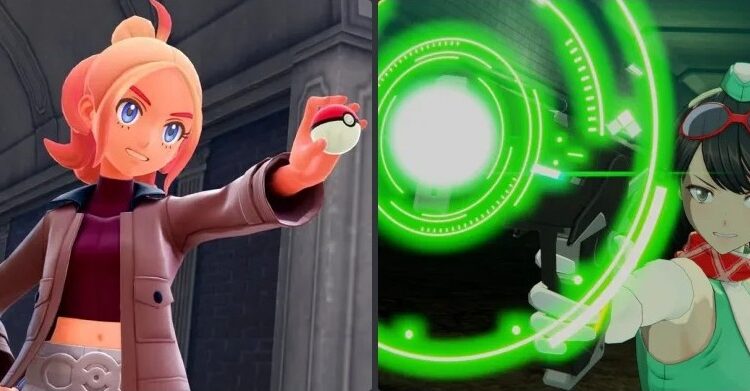In my review of Fire Emblem: Three Houses I recommended the game, and went into details on replay value and the game’s design, but I glossed over the gameplay. I did that so that I could provide a less distracted look at what playing Fire Emblem: Three Houses is like, and add tips for making your game experience smoother. There are lots of system nuances to learn, especially with the changes to the game compared to other entries in the franchise.
But first, gameplay. Fire Emblem: Three Houses is the greatest innovation of the series since Fire Emblem: Awakening. It adds, but it also removes game elements that have appeared in more recent entries. Despite some initial doubts, I’m surprisingly happy with every change. For anyone unfamiliar with the game, the basic gameplay is turn-based strategy, where you move your units on a tiled map, one faction at a time. Units can be developed with a variety of abilities and weapons to engage at different ranges, and be better against certain enemy types.
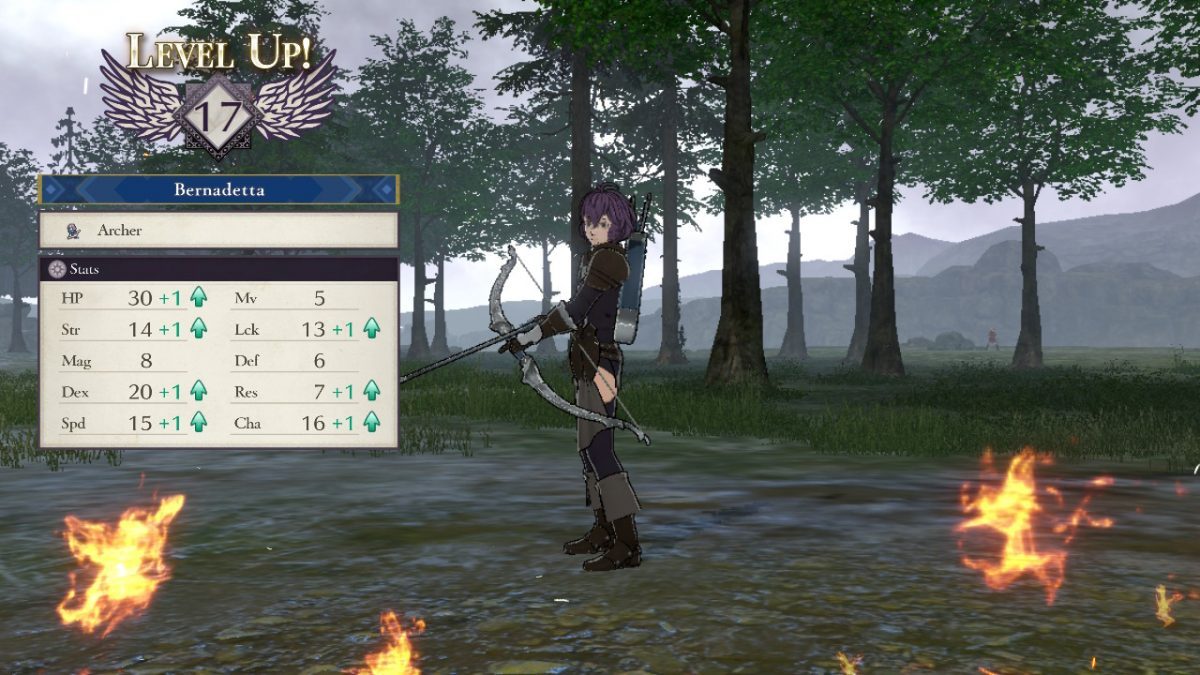
Coming after Fire Emblem: Fates, Fire Emblem: Three Houses brings back weapon durability, and when a weapon breaks it becomes damaged, losing statistics but still usable. Three Houses also removes pairing characters, a mechanic that was easy to abuse. Class changes no longer reset level, a character can go from 1 to 50+. No weapon type is automatically better against another, but each weapon has an associated skill that increases effectiveness against another weapon. All of the skills increase the To Hit value when fighting against another weapon, in the classic weapon triangle where axe beats lance beats sword.
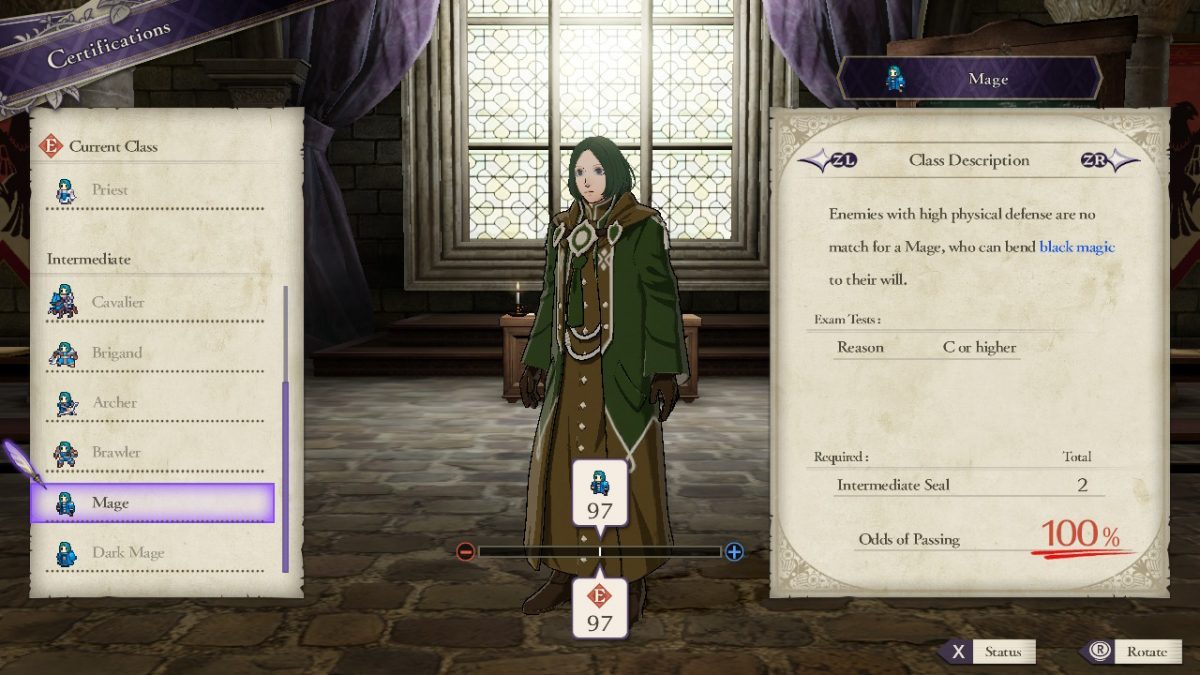
There are more additions than removals. Three Houses adds battalions to the game, a unit of troops you can assign to characters that come with unique, limited use, gambits, most of which are attacks that can’t be countered. Battalions also boost stats. Some gambits can even create field effects, like burning ground tiles. Gambits are improved by having other characters in attack range of the same enemy, which can buff regular attacks as well, and builds the relationships between characters via their Supports.
Weapons, heavy armor, riding, flying, and authority all have ranks from E to S+. This mainly relates to the prerequisites that characters need to meet to change class, and can be grown through the largest addition of all, the classroom system. All characters except the Avatar, who does the teaching, raise their skills through weekly instruction, rather than practice alone. This lets any character do anything in the game, as long as you’re willing to invest time into training them. Skills with stars beside them can become skills the character excels in, learning them at an increased rate and developing them into a special ability.
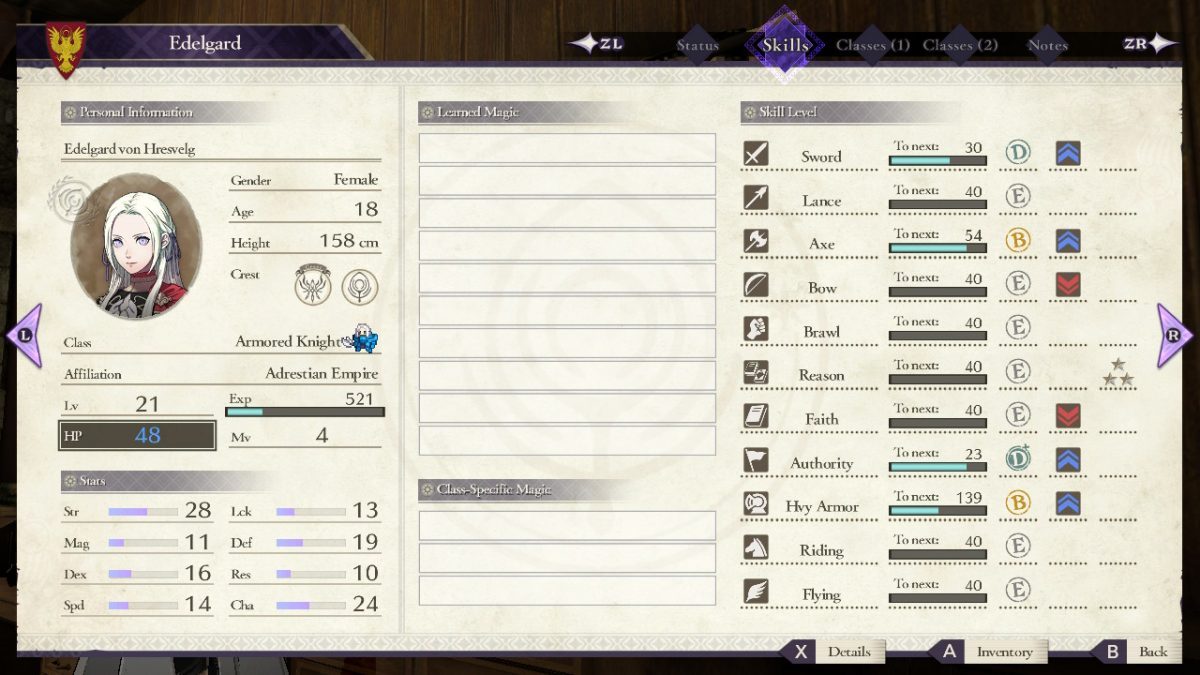
Magic functions as an innate ability for a character, with uses like a weapon. Unfortunately, using magic requires a character to be a magic-using class. This makes specializing in magic a necessity, compared to being able to use weapons freely. I think the game could be improved by allowing any class to cast magic, just with half the usual number of uses.
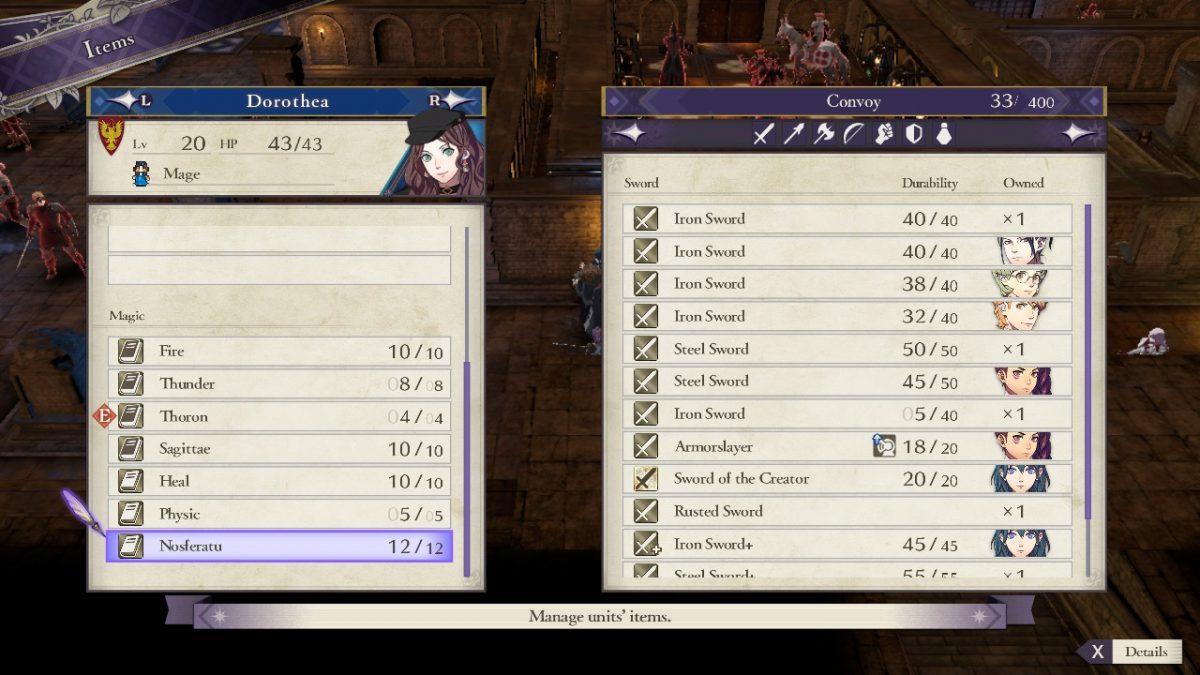
You can also dismount from horses and flying creatures to take advantage of defensive terrain and avoid weapon weaknesses. It’s pretty neat.
Playing Fire Emblem: Three Houses can take a lot of time to learn the nuances. Hence tips.
First, teach every magic user enough Faith, the white magic skill, to learn the Heal spell (D rank). Almost every class that can cast magic has access to every spell a character knows, like the above Mage’s access to white magic despite being a black magic user. There’s no downside to having all your magic damage dealers able to heal.
Second, don’t train Authority early in the game, and only do it as necessary later. Authority is used to equip different ranks of a battalion, and does nothing before you have battalions. It also goes up any time a character with a battalion fights, so it levels up naturally (every character should have a battalion).
Third, once mission assistance is available, always use it to bring another character to your fights. This lets you build Support values to help recruit the character, and if used on Normal with grinding, can let you recruit a character every chapter. Bring a character whose Support you have raised to C rank already if you are only going to grind battles once during the week.
Fourth, a broken weapon is useful for grinding class experience, Support levels, and skill ranks, because those will still develop from the weaker/missed attacks of a broken weapon. Once you can forge/repair weapons, which uses the same resource, it’s better to forge a weapon into a better version than repair it, because forging still resets uses to max.
Fifth. A Bow Knight with a Longbow is broken (range 5 attacks are strong).
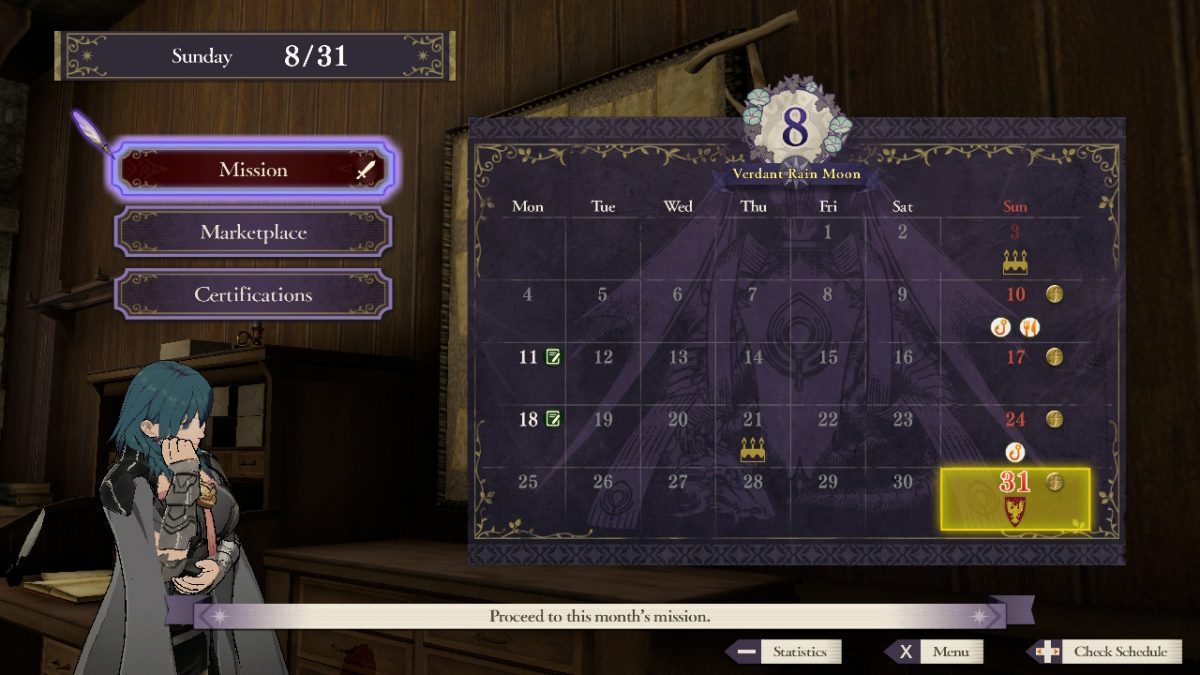
Every player brings their own tips to this game. Please share yours in the comments. There is a lot of room for quality of life tips in a game with this many systems in place. For those of you not playing the game yet, I hope this helps you play Fire Emblem: Three Houses with a bit more confidence, and without losing as much time, or resources, learning mechanics.


